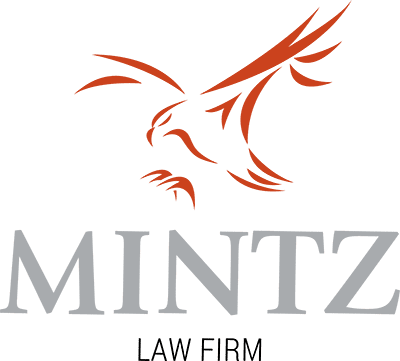Everything You Need to Know About Colorado’s Attractive Nuisance Doctrine
 Property owners across Colorado face unique legal responsibilities when it comes to protecting children from dangerous conditions on their land. While adults are generally expected to recognize and avoid obvious hazards, the law acknowledges that children may not possess the same level of judgment or awareness of danger. When a child is injured on someone else’s property due to an attractive nuisance, the legal landscape becomes complex, involving questions of liability, negligence, and the special protections afforded to minors under Colorado law.
Property owners across Colorado face unique legal responsibilities when it comes to protecting children from dangerous conditions on their land. While adults are generally expected to recognize and avoid obvious hazards, the law acknowledges that children may not possess the same level of judgment or awareness of danger. When a child is injured on someone else’s property due to an attractive nuisance, the legal landscape becomes complex, involving questions of liability, negligence, and the special protections afforded to minors under Colorado law.
At Mintz Law Firm, we have represented families dealing with tragic childhood injuries for over 35 years. Our experienced team understands the devastating impact these accidents can have on both children and their families, and we’re committed to helping you understand your legal rights. Whether your child was injured or you’re a property owner concerned about liability, understanding Colorado’s attractive nuisance doctrine is essential for protecting your interests.
What Is the Attractive Nuisance Doctrine?
The attractive nuisance doctrine is a legal principle that holds property owners liable for injuries to children who are drawn to dangerous conditions on their property, even when those children are technically trespassing. This doctrine recognizes that children, due to their age and inexperience, may not appreciate the risks associated with certain hazards that would be obvious to adults.
Under this legal theory, property owners have a heightened duty of care toward children who might reasonably be expected to trespass on their property if that property contains something that could attract children and pose a danger to them. Colorado courts have consistently applied this doctrine to various situations involving injured children, creating a framework that balances property rights with child safety.
Elements Required for an Attractive Nuisance Claim
Colorado law requires plaintiffs to establish several key elements to successfully pursue an attractive nuisance claim. First, the property owner must have known or should have reasonably known that children were likely to trespass on the property where the dangerous condition existed. The dangerous condition must be one that children, due to their age and experience, cannot reasonably be expected to recognize or appreciate.
Additionally, the burden of eliminating the danger must be relatively small compared to the risk of harm to children. Courts weigh factors such as the cost and feasibility of making the area safe against the likelihood and severity of potential injuries. Finally, the property owner’s failure to exercise reasonable care in addressing the dangerous condition must be what caused the child’s injury.
Common Examples of Attractive Nuisances
Swimming pools represent one of the most frequently cited examples of attractive nuisances in Colorado. The combination of water’s natural appeal to children and the serious drowning risks creates a classic attractive nuisance scenario. Property owners with pools typically must install proper fencing, gates with self-closing mechanisms, and other safety measures to prevent unauthorized access by children.
Construction sites often contain multiple attractive nuisances, from heavy machinery and building materials to excavated areas and scaffolding. Other common examples include trampolines without proper safety enclosures, abandoned buildings, farm equipment left accessible to children, and even seemingly innocent features like decorative ponds or fire pits that can become attractive nuisances if they pose unreasonable risks to children who might be drawn to them.
Property Owner Responsibilities
Property owners in Colorado have specific obligations when their land contains potential attractive nuisances. The primary responsibility involves taking reasonable steps to prevent children from accessing dangerous areas or conditions. This might include installing fencing, posting warning signs, securing equipment, or removing hazardous materials.
However, property owners aren’t required to make their property completely child-proof or eliminate every possible risk. The law requires reasonable precautions proportionate to the danger posed and the likelihood of children accessing the hazardous area. What constitutes “reasonable” varies depending on factors such as the property’s location, the nature of the hazard, and the cost of implementing safety measures.
Age Considerations and Legal Standards
The child’s age plays a crucial role in attractive nuisance cases, as Colorado courts recognize that younger children require greater protection than older ones. Very young children, typically those under seven years old, are generally presumed incapable of negligence, meaning their actions cannot be used to reduce or eliminate the property owner’s liability.
Children between seven and fourteen years old fall into a middle category where courts examine their individual capacity to understand and avoid danger. Teenagers and older children face higher expectations regarding their ability to recognize and avoid obvious dangers, though the attractive nuisance doctrine may still apply in some cases involving older children.
Contact Mintz Law Firm for Experienced Representation
Childhood injuries involving attractive nuisances can result in serious physical, emotional, and financial consequences for your family. At Mintz Law Firm, we understand the complex legal issues surrounding these cases and have the experience necessary to build strong claims on behalf of injured children and their families. Our team has successfully handled premises liability cases throughout Colorado for more than 35 years, and we’re committed to fighting for the compensation your family deserves.
We work on a contingency fee basis, which means you pay no attorney fees unless we secure compensation for your case. Our compassionate attorneys will handle all aspects of your legal claim while you focus on your child’s recovery and healing. To discuss your case and learn about your legal options, call Mintz Law Firm at (303) 462-2999 or contact us online for a free consultation.
